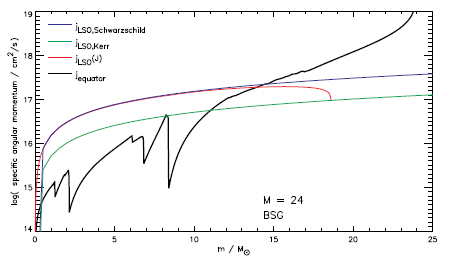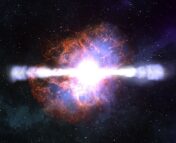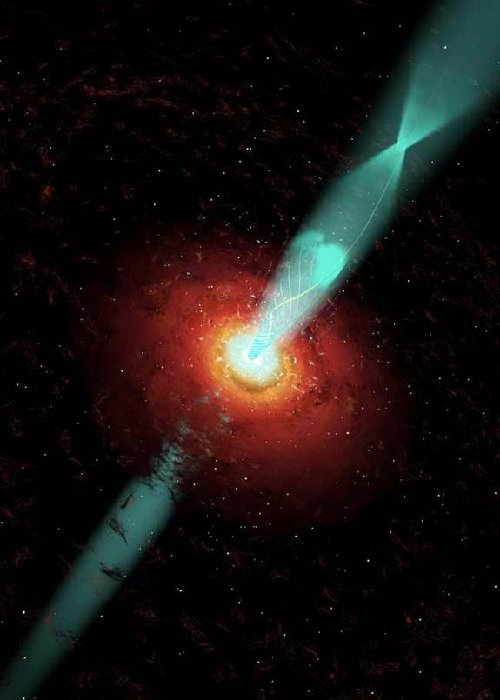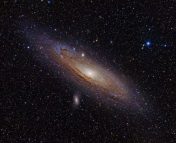Title: A blast from the infant Universe: the very high-z GRB 210905A
Authors: A. Rossi, D. D. Frederiks, D. A. Kann, M. De Pasquale, et al.
First Author’s Institution: INAF – Osservatorio di Astrofisica e Scienza dello Spazio, Via Piero Gobetti 93/3, 40129 Bologna, Italy
Status: Submitted to Astronomy & Astrophysics [open access on arXiv]
12.8 billion years ago — in a galaxy far, far away — a massive star collapsed. Over the subsequent 15 minutes, the ensuing explosion released enough light to outshine our Sun one-hundred-quadrillion times over. On September 5, 2021, this light hit the detectors aboard the Swift and Wind spacecrafts, thus alerting us to the existence of GRB 210905A — one of the longest, most distant, most energetic, and most luminous gamma-ray bursts that we’ve ever detected.
So, what can we learn from this outstanding outburst?
Dauntingly Distant Detonations
Long gamma-ray bursts (GRBs) like 210905A occur when the core of an especially heavy star collapses into a compact object — like a black hole or a magnetar — sending the outer layers of the star spiraling inwards. As the infalling material swirls around the compact core, this “central engine” ejects a violent stream of ultra-fast particles — a relativistic jet — that blasts through the star and into interstellar space. The conversion of the jet’s immense kinetic energy into radiation produces a few quick, blinding flashes of high-energy gamma-rays; this so-called prompt emission constitutes the “burst” that gives GRBs their name. Meanwhile, as the jet launches a shockwave into the surrounding medium, shocked, jittering charged particles yield a secondary afterglow emission — a source of X-ray, optical, infrared, and lower-energy light that can shine for months after the initial collapse. Together, observations of the prompt and afterglow emission allow us to deduce the properties of the GRB’s source and the precise mechanism of the burst.
But, why should we care about these ephemeral explosions? Particularly, why should we care about GRBs that are billions of light-years away? The short answer: distant GRBs — as some of the brightest entities in the cosmos — serve as beacons illuminating the infant Universe. By tracing the light from GRBs, we can probe the conditions of intervening interstellar and intergalactic media. Moreover, since gamma-rays are barely affected by dust or other intergalactic absorbers, the emission from long GRBs is a reliable tracer of star formation in distant galaxies. If we look deep enough into space, we should conceivably be able to see light from the gamma-ray bursts of the very first stars, allowing us to infer the properties of these primordial objects and to estimate the point in cosmic history at which the first generations of stars gave rise to those we see today.
If GRB 210905A deviates from the trends we see among closer GRBs, then we may have something special on our hands — perhaps an explosion of one of the first stars in existence, or an indication that the earliest galaxies had different rates of star formation. Today’s authors thus seek to determine whether GRB 210905A is truly extraordinary, or whether it’s merely an extension of our local GRB population.
Characterizing a Cataclysmic Combustion
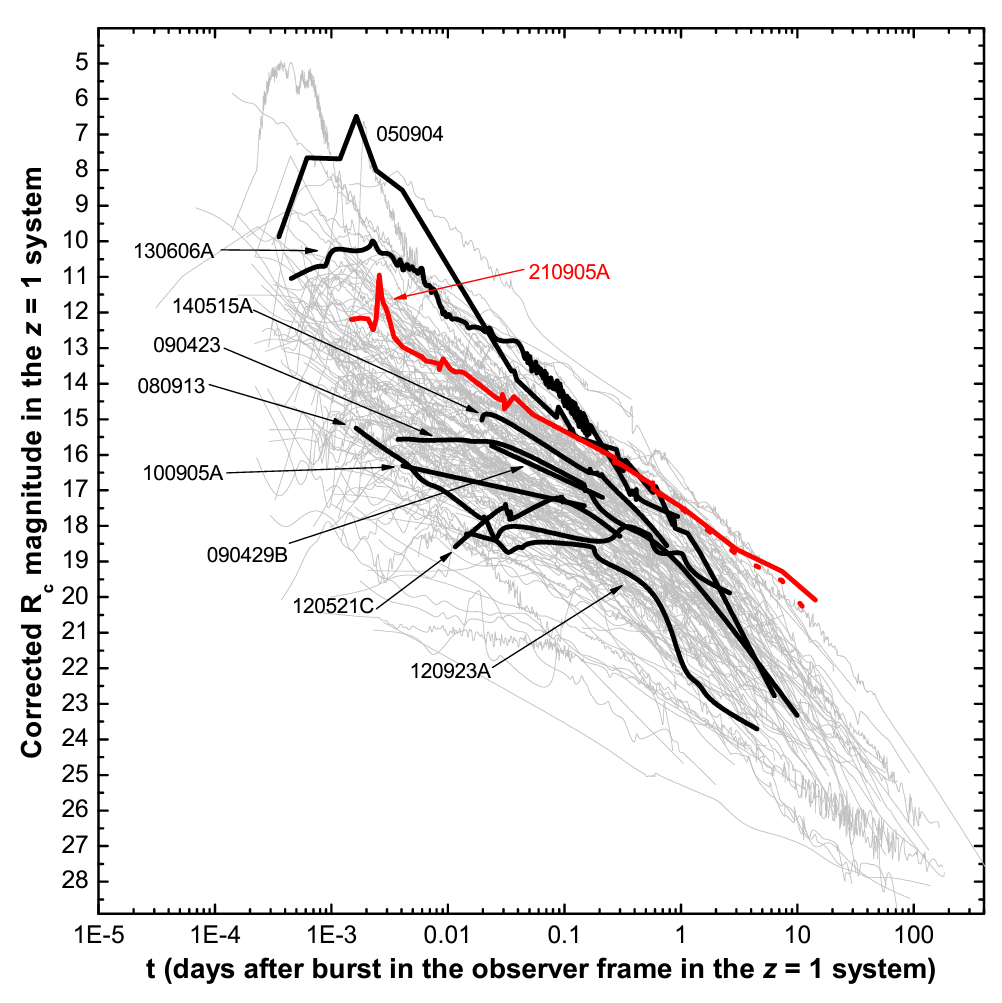
The authors begin their investigation by fitting models to the light curves (the amount of light emitted vs. time) and spectral energy distributions (the amount of light emitted vs. frequency) of GRB 210905A’s prompt and afterglow emission. The authors find that the data is well fit by a synchrotron emission model — one in which the light is produced by particles twirling around magnetic field lines — consistent with a long GRB embedded in the interstellar medium. Additionally, based on the energetics of the blast, the authors conclude that the GRB must be powered by a spinning black hole ejecting shells of material into the relativistic jet.
This modeling allows the authors to put GRB 210905A in context. 210905A is located at a redshift of 6.312, making it the fifth most distant GRB ever detected. 210905A’s isotropic gamma-ray energy — the total energy of the prompt emission if it were emitted equally in all directions — is within the top 7% of detected GRBs, while its intrinsic peak energy is among the top 15%. Meanwhile, 210905A’s X-ray and optical afterglows are among the brightest in general, with the optical afterglow taking the prize for the brightest ever detected at late post-burst times (see Figure 1). GRB 210905A is indeed very impressive!
Evaluating the Extraordinariness of an Extragalactic Explosion
To truly evaluate the “extraordinariness” of GRB 210905A, the authors consider a few well-established trends amongst the population of known GRBs. Figure 2 shows the peak rest-frame energy vs. the isotropic gamma-ray energy and luminosity for a collection of 315 GRBs across a wide range of redshifts. The prompt emission of GRB 210905A is fully consistent with the established trends. Furthermore, Figure 3 shows the X-ray afterglow luminosity vs. the isotropic gamma-ray energy at various post-burst times. At each time, GRB 210905A perfectly fits amongst the other GRBs.
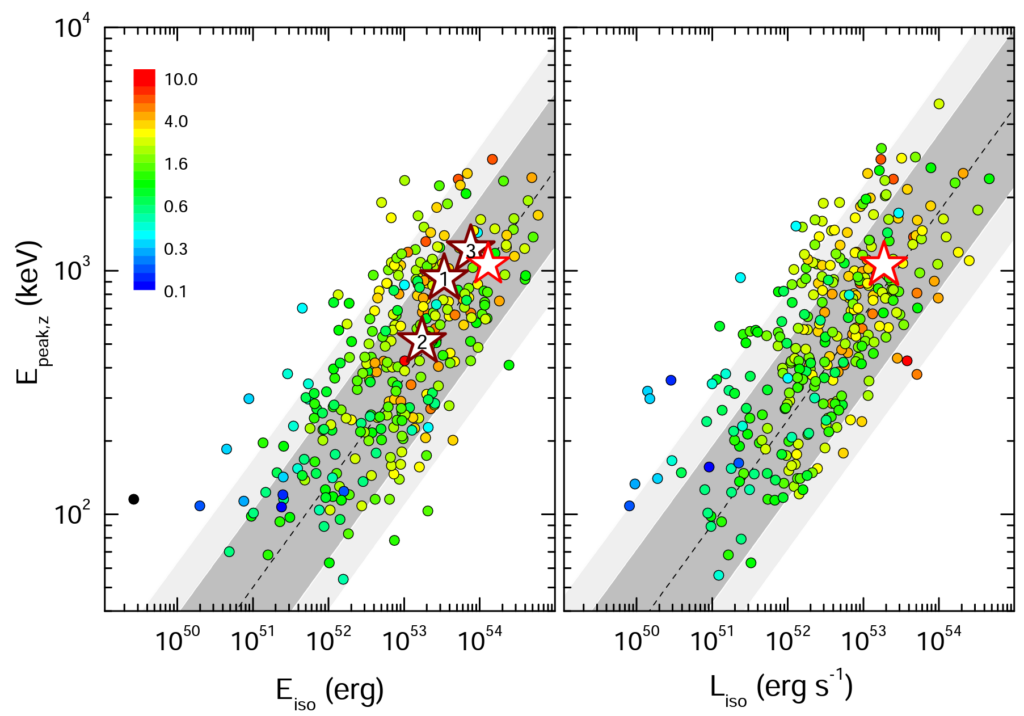
Sadly, it appears that, compared to the global population of GRBs, 210905A is not particularly special. The authors conclude that the energy and luminosity of 210905A are too low to have been generated by an explosion of one of the first stars. Additionally, based on an argument concerning the size of 210905A’s jet, the authors reason that the rate of star formation in 210905A’s distant host galaxy probably does not differ significantly from the rates of star formation in other GRB host galaxies closer to us.
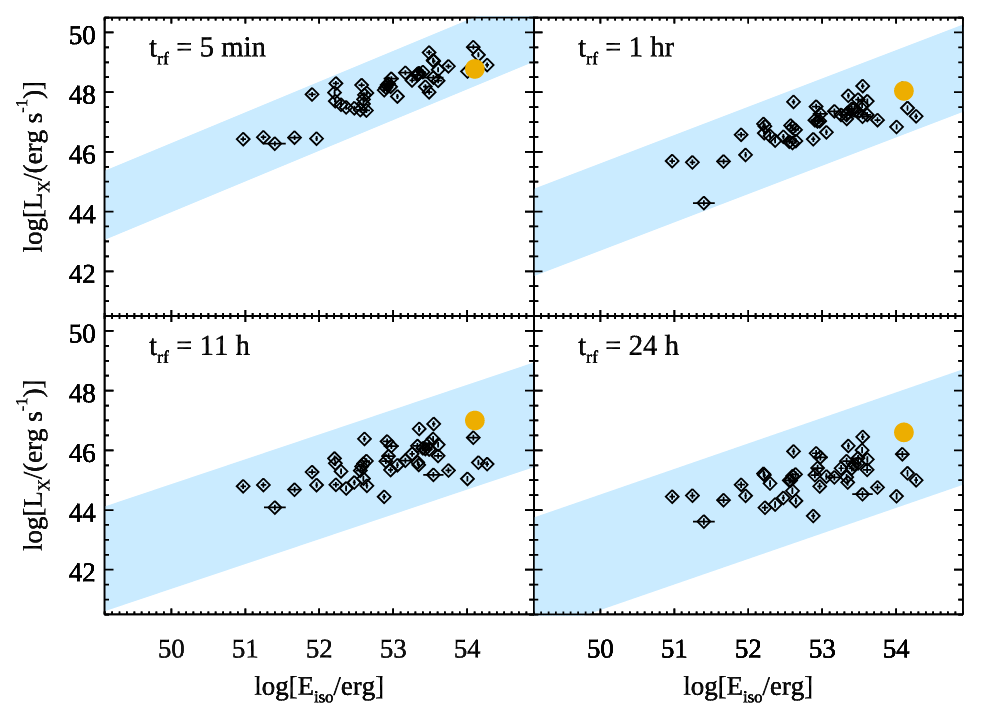
Now, this doesn’t mean that we shouldn’t be excited at all about the discovery of GRB 210905A — by all metrics, the detection of a GRB at this distance is incredibly rare. Even though 210905A may not provide us with any new information on the earliest stars or galaxies, the mere fact that we’ve been able to detect this GRB is extremely promising for the near future of high-energy astronomy! Upcoming missions like THESEUS and the Gamow Explorer, in concert with state-of-the art telescopes like JWST, will undoubtedly discover many more of 210905A’s brethren. The coming years are bursting with potential to unveil the mysteries of the early Universe.
Astrobite edited by: Katya Gozman
Featured image credit: Harvard Magazine

